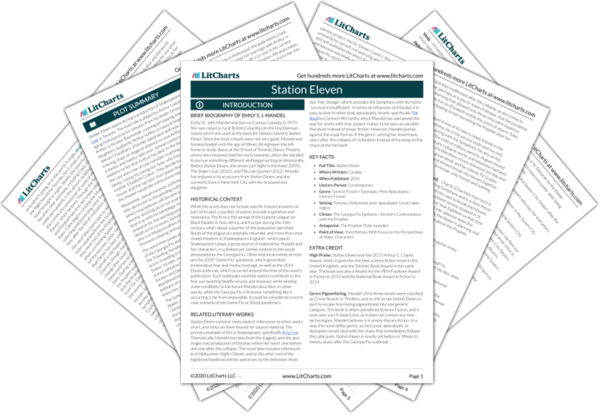Like airplanes, thepaperweightfunctions as a symbol in various ways. The paperweight, along with its peculiar journey, symbolizes human connection. It passes through the hands of many of the novel’s important characters. It originates withClark, who purchases it at a museum gift shop (which slightly foreshadows his role as curator of the Museum of Civilization). Clark then gives it as a gift to Arthur and Miranda at the dinner party, but Miranda takes it and holds on to it for years. In the weeks before the collapse, she decides to return it to Arthur. But Arthur has no memory of it, and to him it is a symbol of clutter and the materialism he tries to escape before the end of his life. Seeking to rid himself of possessions, Arthur immediately re-gifts the paperweight to Tanya, who in turn gives it to young Kirsten as a distraction after Arthur’s onstage death. This journey from person to person is a physical representation of the interconnectivity the novel explores; it follows the chance connections of the novel’s main characters and represents the influence they have on one another and the way that fate seems to operate in Station Eleven.
To Kirsten, the object’s final owner, the paperweight represents beauty. A block of glass with a storm cloud inside, the weight is at once stunning and completely useless in the post-collapse world. When she receives it, Kirsten believes it is the most beautiful object she has ever seen. After the collapse, she continues to carry it around with her for this reason, despite the fact that it is dead weight and utterly impractical. In this way, the paperweight represents the novel’s appreciation of art and beauty as something that, while not practical for survival, is essential for doing more than surviving.








